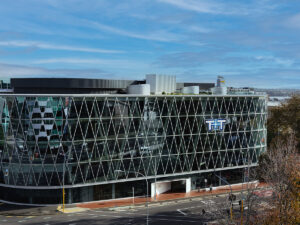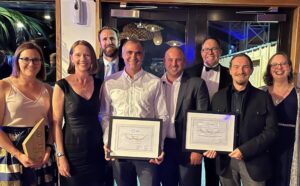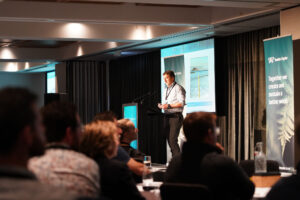Water New Zealand Stormwater Conference, 2021, Tauranga
Lowes Pit in Hastings was originally a quarry for rock/gravel extraction and dates back to the 1940s. The pit, which sits within the municipal drinking water source protection zone (SPZ) intercepts the shallow groundwater table and currently also receives stormwater runoff from a highly industrialised catchment. The water quality of discharges to the pit are typical of an industrialised catchment and ongoing concerns about the interaction between the pit water quality and the unconfined groundwater aquifer have been raised. In response to the perceived threat to its drinking water supply, Hastings District Council (HDC) undertook an assessment of the potential risks and have now completed detailed studies of the Lowes Pit stormwater catchment and groundwater systems. Show more…The Council has also approved a suite of solutions to minimise the identified risks and deliver targeted community outcomes. The main objectives of the project were to assess 1.) the risk of stormwater pollutants in Lowes Pit to drinking water supplies and 2.) the general risk of pollution effects in line with urban stormwater management guidance and requirements such as the Hawke’s Bay Regional Council Waterway Guidelines for Stormwater Management. An initial evaluation of risk by assessing in-pit water quality data relative to the drinking water and ANZECC guidelines indicated that dissolved metals, E.coli, turbidity and phosphorus were possible water quality parameters of concern. This desktop assessment was then followed up by detailed site investigations and monitoring in which dry and wet weather sampling of the stormwater network, in-pit stratigraphic water quality sampling and a drone-based bathymetric survey were undertaken. Confirmation of overland drainage pathways and visual inspection of the stormwater network at strategic locations were also undertaken as part of the site investigation.
Since E.coli contamination was of particular concern in terms of water supply risk, qPCR testing for a subset of wet and dry weather samples was included. Laboratory testing revealed that there was no evidence of human sewage present in the stormwater network during the dry weather and small wet weather sampling events. It also confirmed that ruminant animals were the most likely source of E.coli in the network. Detectable levels of nutrients, heavy metals and Polycyclic Aromatic Hydrocarbons (PAHs) were also confirmed in the stormwater network while laboratory testing of the pit sediment indicated significant metal accumulation in the vicinity of the stormwater outlets. General urban stormwater pollution risk from heavy metals, sediments and PAHs were classified as medium to high risk. Assessment of the water quality data combined with groundwater modelling indicated a very low risk of pollution to water supplies from Lowes Pit. Based on the abovementioned a risk mitigation plan consisting of source control measures as well as multi-barrier pollution reduction systems was recommended for implementation. The multi-barrier system consists of low-cost IoT real time monitoring sensors, automated deflection of first flush runoff to the foul sewer system, treatment of post-first flush runoff, and conversion of Lowes Pit to an engineered natural filtration system
.Show less…




















